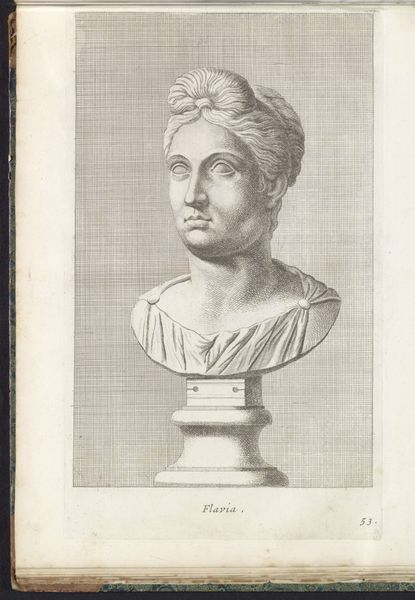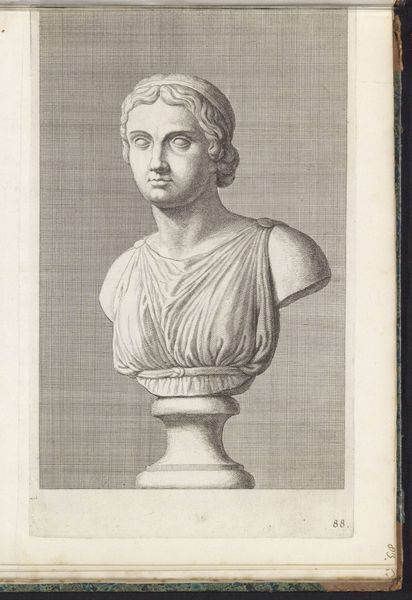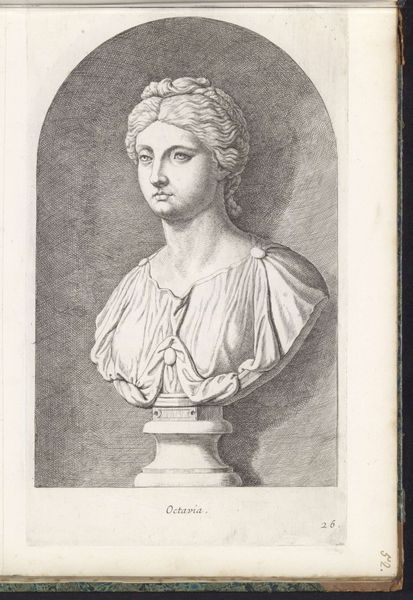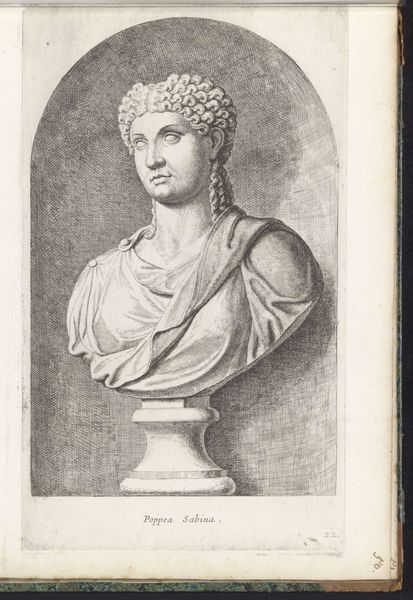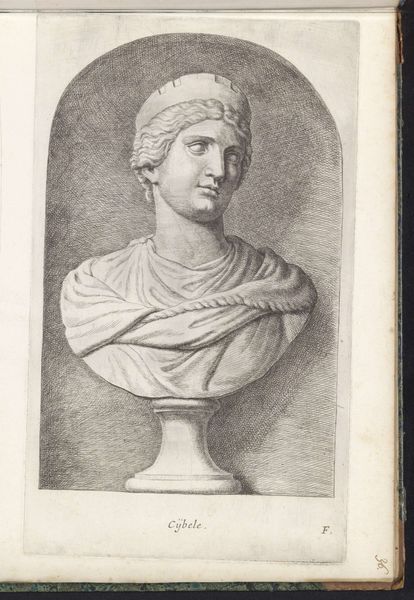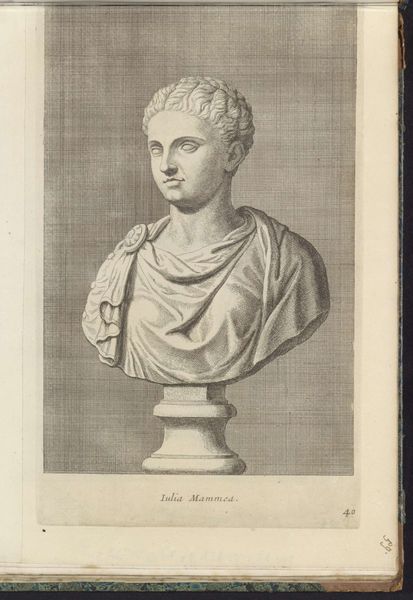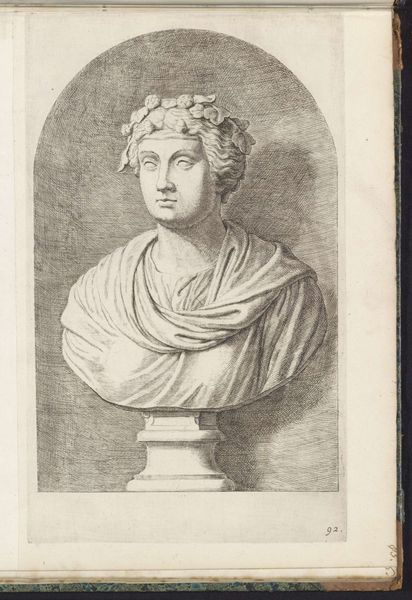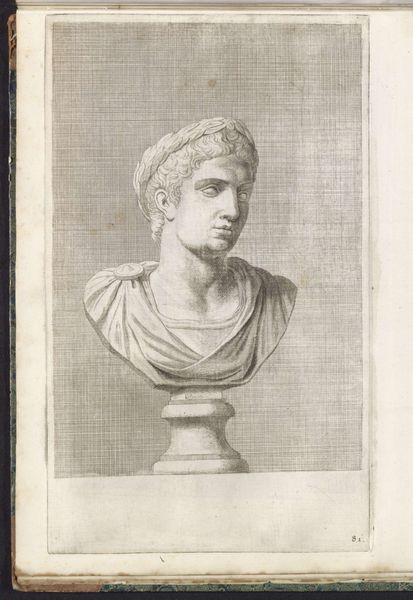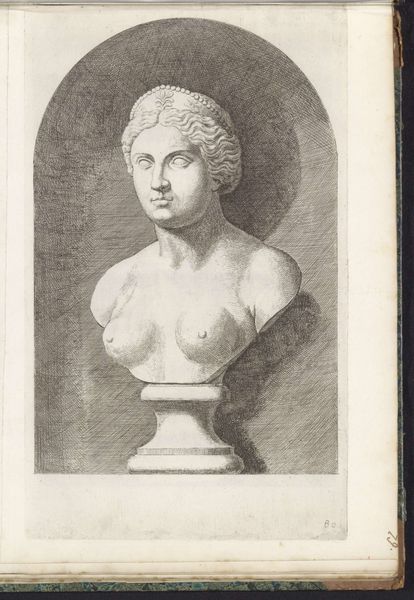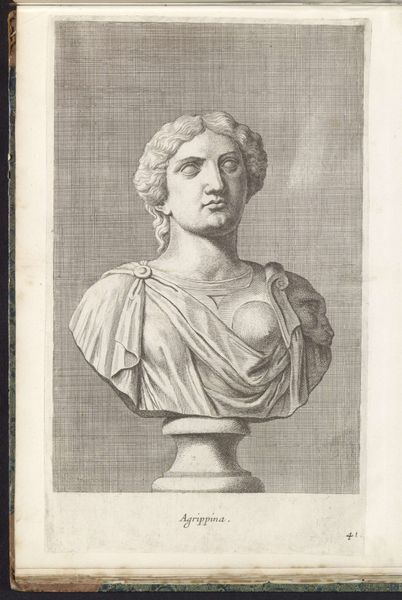
print, engraving
#
baroque
# print
#
history-painting
#
engraving
Dimensions: height 327 mm, width 199 mm
Copyright: Rijks Museum: Open Domain
Editor: This is Hubert Quellinus’s engraving of ‘Buste van Antonia de Oudere,’ made sometime between 1646 and 1670. It's housed here at the Rijksmuseum. The texture in the engraving seems almost like it's trying to emulate sculpture. What can you tell me about the piece's composition? Curator: Indeed, observe the rigorous control of line, creating subtle gradations that mimic the three-dimensionality of sculpture. Notice the strategic use of hatching and cross-hatching; where do you see the darkest concentrations of line, and what effect does this have on your perception of the bust's form? Editor: I see it around her right shoulder and the base. This gives it a really solid feel, it emphasizes depth. It really helps define her form, almost like chiaroscuro in painting. Curator: Precisely. And consider how the engraver uses line not merely to depict form, but also to create tonal contrasts. The surface of the paper is almost activated—its flatness contradicts the sculptural illusion. Note also the stark background field. What is its relationship to the figure? Editor: The starkness of it really makes her pop, all the detail in her hair stands out in contrast. The simplicity almost lends it a timeless feel. Curator: A well-considered point. It allows us to appreciate the inherent qualities of line and form devoid of extraneous detail. It’s a reduction to essence, inviting an engagement with the pure mechanics of representation. The artist prioritized the conceptual image. Editor: That's a new way to think about prints for me. Thank you! Curator: My pleasure. It is the dialectic between what is present and what is suggested, revealed through rigorous visual analysis.
Comments
No comments
Be the first to comment and join the conversation on the ultimate creative platform.
